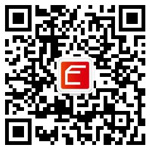
Background
CD4 is a member of the immunoglobulin superfamily and is implicated as associative recognition element in MHC (Major Histocompatibility Complex) class II-restricted immune response. On T-lymphocytes, it defines the helper/inducer subset. The mature 55 kd CD4 protein consists of a 372 amino acid extracellular segment composed of four tandem immunoglobulin-like VJ regions. The CD4 molecule is a major receptor for human immunodeficiency virus (HIV), binding directly to the envelope glycoprotein gp120 on HIV, with the co-receptors being CCR5 or CXCR4. It has been shown that the V-like domains are critical for binding with HIV envelope gp120. This soluble CD4 fragment (sCD4) will work in HIV neutralization assays at levels comparable to previously published results. The minor upper band seen in the Coomassie blue-stained gel is likely to be due to the presence of uncleaved signal sequence.
Description

Specifications



